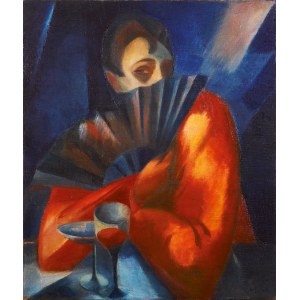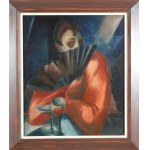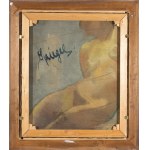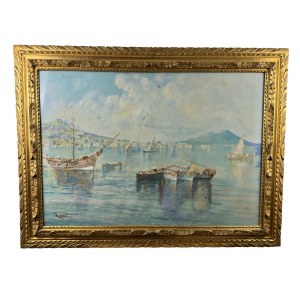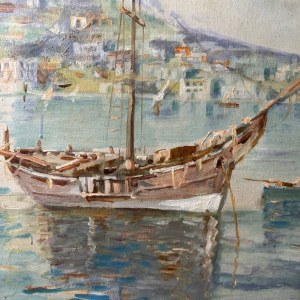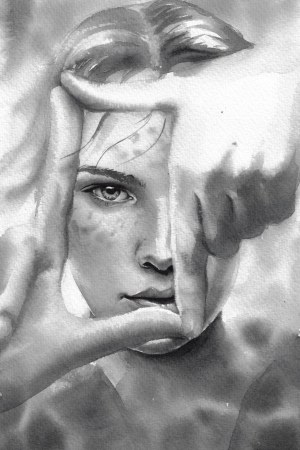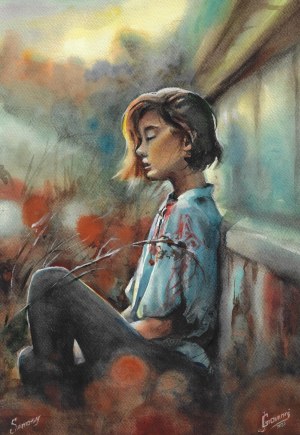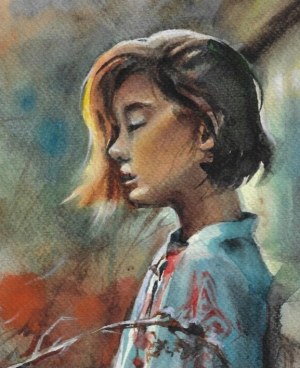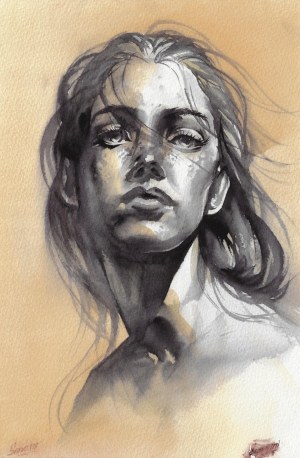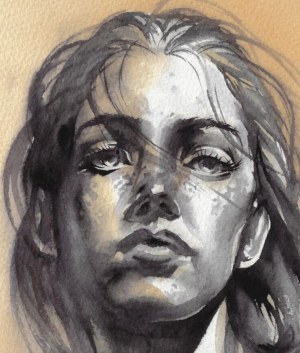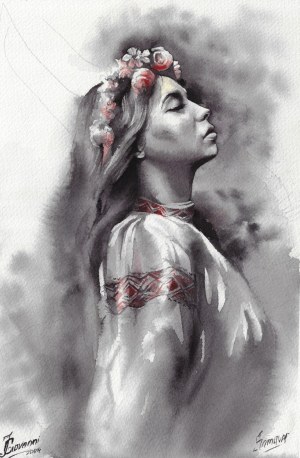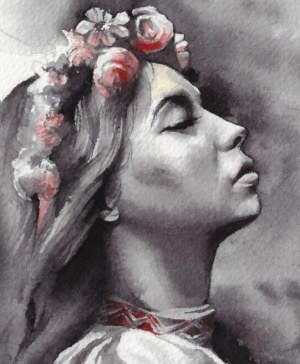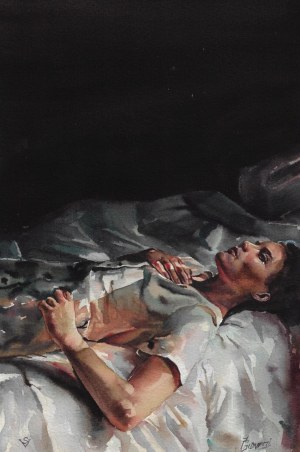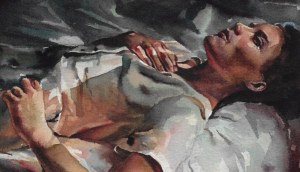HANS SPIEGEL*
(Münnerstadt 1894 - 1966 Stuttgart)
In the Champagne Bar, around 1923
oil/canvas, 75 x 64 cm
monogrammed H.S.
exhibited at Castle Halbthurn "Bei Geniessern zu Gast", Burgenland 2021 and depicted in Expressiver Realismus in Deutschland, Vienna 2017, p 4, N. 2
Provenance: Griesebach auctions Berlin, Fine Arts Widder
ESTIMATE °€ 12.000 - 18.000
START € 10.000
German artist of the 20th century. Studied at the Munich Academy with Gabriel von Hackl and Angelo Jank, and from 1918 with Christian Landenberger in Stuttgart. In 1919, together with his fellow students Oskar Schlemmer, Willi Baumeister and Albert Mueller, founded the Üecht Group. In 1919 he exhibited in Stuttgart, 1920 participation in the exhibition of the Novembergruppe in Berlin. Jury member of the Stuttgart Secession, 1925 professor and 1932 to 1943 director at the Stuttgart Academy. 1929 Founded Group 29 together with Adolf Walschmidt, Gottfried Graf and Albert Mueller. Strong influence of Cubism, round organic, also human forms in interplay with geometric forms. The mysterious, almost androgynous figure in the champagne bar reveals a subtle color chord of red and blue tones and a charming play with the angular shapes of the fan and the round shapes of the glasses, each of which is repeated in the soft, round clothing of the lady and the radiant background.
Spiegel studied at the Munich Academy with Gabriel von Hackl and Angelo Jank. After 1918 he continued his artistic training with Christian Landenberger in Stuttgart. Among his fellow students were Oskar Schlemmer, Willi Baumeister and Albert Mueller. The Stuttgart "Üecht Group" emerged from their intensive exchange in 1919. In 1919 he took part in the exhibition of the German Association of Artists in Stuttgart, and in 1920 he took part in the show of the Berlin "November Group" in Rome. As a representative of the Stuttgart local group, he exhibited in 1921, 1922 and 1923 at the Great Berlin Art Exhibition. From 1924 to 1928 Spiegel was a jury member of the "Stuttgart Secession". In 1925 he received a professorship at the Stuttgart Academy, of which he was director from 1932 to 1943. In 1929 the artist received the Württemberg State Prize and in the same year he founded the "Group 29" Stuttgart together with Adolf Walschmidt, Gottfried Graf and Albert Mueller. Spiegel's early work was almost completely destroyed by air raids during World War II.
Hans Spiegel studied at the Munich Art Academy with the animal painter Angelo Jank and the Piloty student Gabriel von Hackl, with whom painters as diverse as Albin Egger-Lienz, Max Slevogt, Wilhelm Thöny and Franz Marc also received their artistic training. In 1918 Spiegel moved to the Stuttgart Art Academy to work with Christian Landenberger, whose artistic intentions must have appealed to Spiegel much more, as the painting in the champagne bar from around 1923 suggests. Like Landenberger, Spiegel primarily relies on a realistically painted genre motif that we know only too well from the motif repertoire of the 1920s. The woman and seductress having fun alone in a bar or some other establishment on the fringes of the bourgeois. In Spiegel's painting she is represented by a woman dressed in bright red against a blue background. She partially hides her face behind a fan, but her eyes are turned curiously to the viewer. She wears the striking short haircut typical of the so-called Golden Twenties, with which US actress Colleen Moore achieved her breakthrough in the 1923 film "Flaming Youth". Josephine Baker, on the other hand, popularized the lard curls that were styled into the face and glued to the head in a glossy finish. Like Landenberger, Spiegel does not build his picture on parts of reality, but exclusively on the colourfulness. Like his teacher, Spiegel remained within the framework of what characterized 19th-century painting, despite cubist tendencies towards abstraction. Incidentally, for this portrait, Spiegel uses a portrait head painted in 1918, which reveals the confrontation with Cézanne and Cubism even more vividly. Again and again one discovers areas of color in his composition, which at first seems so realistic, which have little to do with what is depicted and only serve the color effect and thus also emphasize its "modernity".
PLEASE NOTE:
The purchase price consists of the highest bid plus the buyer's premium, sales tax and, if applicable, the fee of artists resale rights. In the case of normal taxation (marked ° in the catalog), a premium of 24% is added to the highest bid. The mandatory sales tax of 13% is added to the sum of the highest bid and the buyer's premium. The buyer's premium amounts to 28% in case of differential taxation. The sales tax is included in the differential taxation.
最後に閲覧したロット
出品リストを見るにはログインする必要があります
お気に入り
出品リストを見るにはログインする必要があります



